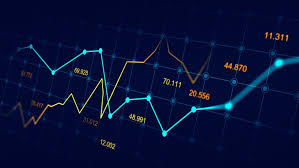
How to Start Forex Trading: A Comprehensive Guide
Forex trading can be a lucrative venture, but it requires a solid understanding and strategy to navigate the complexities of the foreign exchange market. In this article, we will explore the fundamental steps to help you begin your trading journey. Whether you’re a novice or looking to enhance your trading skills, this guide provides essential insights. Don’t forget to check out the how to start forex trading Forex Brokers in Argentina for reliable options to consider.
1. Understanding Forex Trading
Forex trading, or foreign exchange trading, involves buying and selling currencies to make a profit. The forex market is the largest and most liquid financial market in the world, with a daily trading volume exceeding $6 trillion. Understanding how this market operates is crucial for anyone looking to trade effectively.
1.1 The Basics of Currency Pairs
Currencies are traded in pairs, such as EUR/USD or GBP/JPY. The first currency in the pair is the base currency, while the second is the quote currency. The price of a currency pair indicates how much of the quote currency is needed to purchase one unit of the base currency.
1.2 Market Participants
The forex market comprises various participants, including central banks, financial institutions, corporations, and individual traders. Each participant plays a role in determining currency values based on economic indicators, geopolitical events, and market sentiment.
2. Setting Up Your Forex Trading Account
Before you can begin trading, you’ll need to set up a forex trading account. Here are the steps you should follow:
2.1 Choose a Reliable Forex Broker
Selecting a reputable broker is essential for a successful trading experience. Look for brokers with a good reputation, competitive spreads, and user-friendly trading platforms. Consider reading reviews and comparing the features of different brokers.
2.2 Open a Trading Account
Once you’ve chosen a broker, you will need to complete the registration process. This typically involves providing personal information, verifying your identity, and agreeing to the broker’s terms and conditions.

2.3 Fund Your Account
After your account is set up and verified, you’ll need to deposit funds. Brokers often provide multiple deposit methods, including bank transfers, credit/debit cards, and e-wallets. Make sure to check the minimum deposit requirements before funding your account.
3. Developing a Trading Strategy
A well-defined trading strategy is vital for success in forex trading. Here are key components to consider when developing your strategy:
3.1 Define Your Trading Style
Your trading style reflects how you approach the market. Common styles include day trading, swing trading, and scalping. Day traders open and close positions within the same day, while swing traders hold positions for several days or weeks. Scalpers aim for quick profits on small price changes.
3.2 Analyze the Market
Conducting a market analysis is crucial for making informed trading decisions. There are two primary methods of analysis: fundamental analysis and technical analysis. Fundamental analysis involves examining economic indicators and news events, while technical analysis focuses on price charts and patterns.
3.3 Set Risk Management Rules
Establishing clear risk management rules will help you protect your capital. This includes determining how much you’re willing to risk on each trade, setting stop-loss orders, and diversifying your trades to minimize exposure to any single currency pair.
4. Choosing a Trading Platform
Your choice of trading platform can significantly impact your trading experience. Most brokers offer their proprietary platforms or popular third-party platforms like MetaTrader 4 (MT4) or MetaTrader 5 (MT5). When evaluating platforms, consider the following features:
4.1 User Interface and Usability
A user-friendly interface is essential, especially for beginners. Ensure the platform is easy to navigate and that you can execute trades without issues.
4.2 Charting Tools and Indicators

Look for platforms that offer advanced charting tools and a variety of technical indicators to enhance your analysis capabilities.
4.3 Mobile Compatibility
Many traders prefer to have the option to trade on the go. A mobile-compatible platform will allow you to monitor and execute trades from your smartphone or tablet.
5. Practice with a Demo Account
Before trading with real money, it’s highly recommended to practice using a demo account. Most brokers offer demo accounts that allow you to trade with virtual currency. This is an excellent way to familiarize yourself with the trading platform, test your strategy, and gain confidence without risking your capital.
6. Start Trading with Real Money
After practicing on a demo account and feeling confident in your strategy, the next step is to start trading with real money. Here are some tips for transitioning to live trading:
6.1 Start Small
When you begin live trading, start with small trades to manage your risk effectively. This way, you can get a feel for how emotions may affect your trading decisions in a live environment.
6.2 Keep a Trading Journal
Maintaining a trading journal can help you track your trades, analyze your decisions, and identify areas for improvement. Document key information, such as the reasons for entering a trade, your emotions, and trade outcomes.
6.3 Continuous Learning and Adaptation
Forex trading is a dynamic environment, and ongoing education is crucial. Stay updated on market trends, continue to refine your trading strategy, and be open to adapting your approach as needed.
Conclusion
Starting forex trading requires careful planning, education, and practice. By understanding the market, selecting a reliable broker, developing a strategy, and practicing diligently, you can increase your chances of success. Remember that trading involves risks, and it’s essential to approach it with the right mindset and discipline. Good luck on your journey into the world of forex trading!





